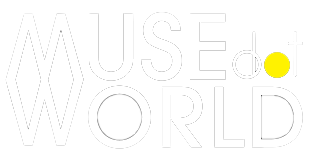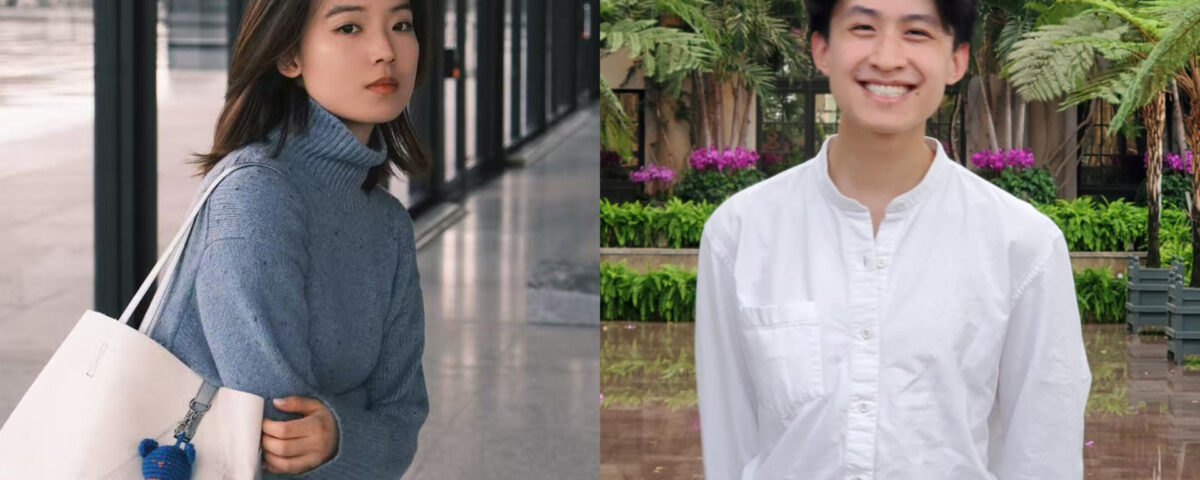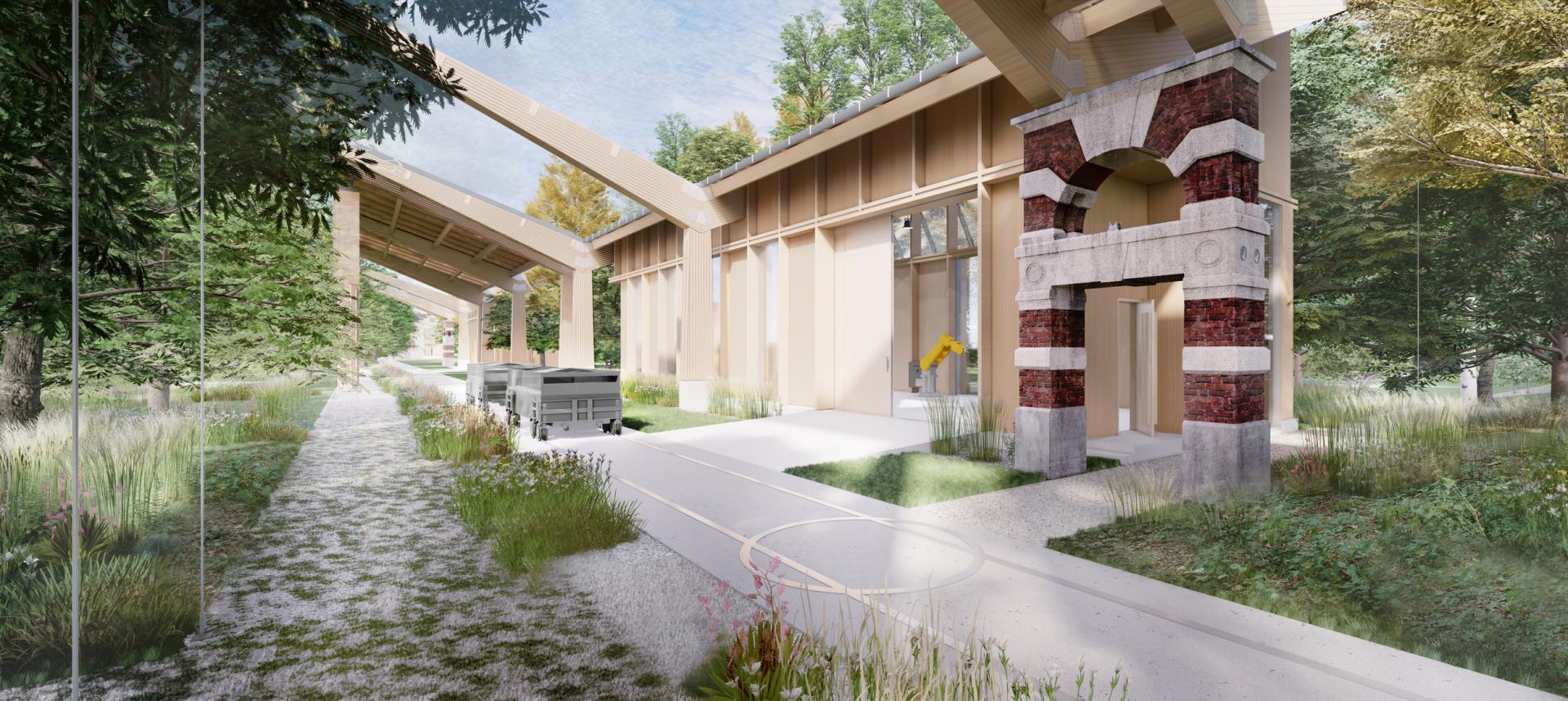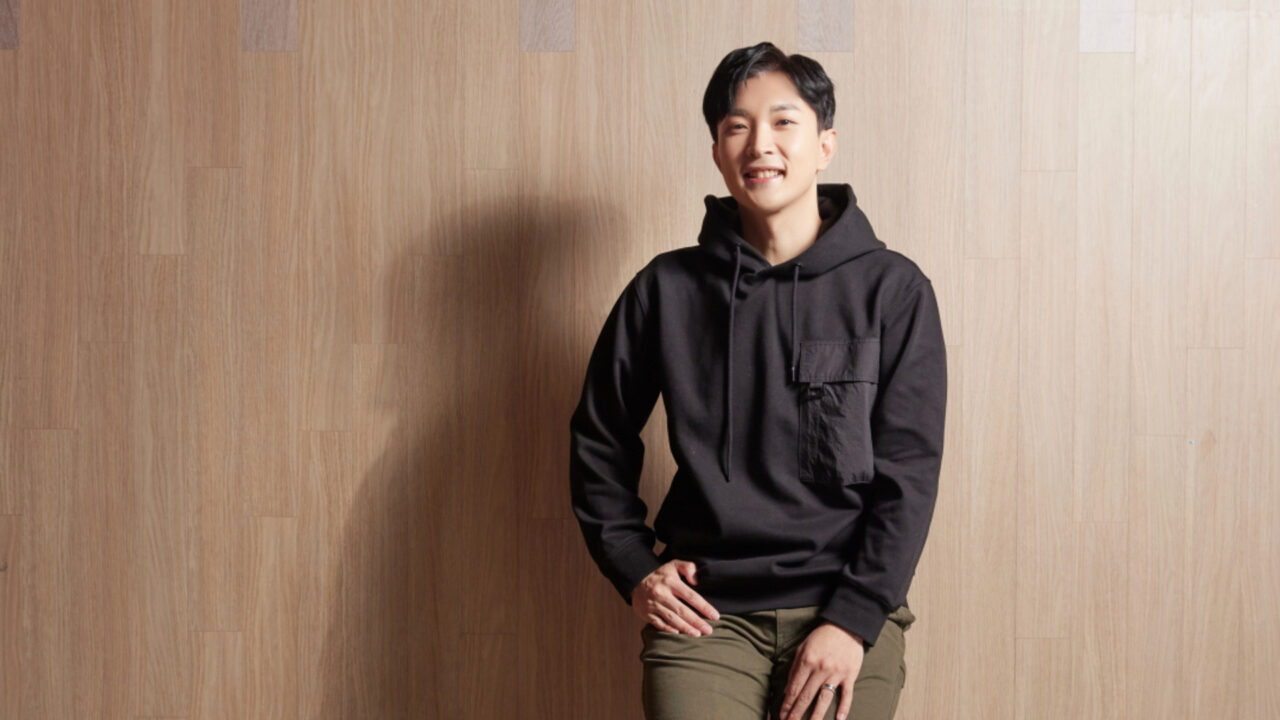Two Designers Rethink the Built Environment | Featuring Xueyuan Wang & Justin Fan

Mingyong Cheng’s Beyond Characters: The Unseen Labyrinth A Journey Through Dyslexia
April 22, 2025
Shaping UX Through Visual Thinking: An Interview with Maomao Ding
April 22, 2025Xueyuan Wang & Justin Fan
Xueyuan Wang, an urban designer in New York, and Justin Fan, an architecture designer and project manager in Houston, approach the built environment as a space for social and material dialogue. Their practice blends aesthetics with intention, imagining architecture as a medium for reflection, durability, and meaningful engagement.
We are Xueyuan Wang and Justin Fan, designers based in the United States.
Xueyuan: I'm an architecture and urban designer based in New York City, while Justin is an architecture designer and project manager based in Houston.
I’ve always seen the built environment as both a reflection and a driver of how human society relates to the world around us—especially in a time of rapid transformation. For me, design is about imagining new, more thoughtful ways of living. It’s a tool for questioning the status quo and proposing alternatives that are beautiful, resilient, and socially engaged.
Justin: My motivation to pursue a career in architectural design stems from a deep fascination with the synthesis of structure, materiality, and geometry in architecture. I’ve always been intrigued by how these elements come together to create not only functional but also visually compelling spaces. For me, architecture is about more than just designing buildings; it’s about creating thoughtful, enduring structures that engage with their environment and stand the test of time.
Experimentation is at the heart of our creative process—it’s how new ideas emerge and evolve. In our project Gypsum to Gypsum, for example, we faced the challenge of preserving massive historic stone structures while introducing new architectural interventions. This required us to develop innovative structural strategies that were both respectful and forward-looking.
We approached the existing stone buildings not as obstacles, but as foundations—both literally and conceptually. By treating them as structural bases, we were able to layer new glue-laminated timber frameworks on top to create habitable spaces. Each historic building had its own structural diagram, so we tested a range of responses through digital modeling and physical prototypes. Our goal was to find solutions that were not only structurally efficient but also formally elegant.
In one instance, we leveraged the strength of existing stone arches and introduced a Y-shaped beam system to support the new roof structure. To minimise material presence while ensuring stability, we incorporated tension cables to anchor the roof and resist uplift forces. This iterative, hands-on process allowed us to transform constraints into design opportunities.
Xueyuan: I often find inspiration in the way children see the world. This perspective traces back to my high school years in Singapore, where I volunteered in after-school programs at local community centres. Organising mini science fairs, weekly art sessions, and other family-oriented events gave me the chance to engage closely with children—and to observe how they interpret their surroundings with curiosity, honesty, and imagination.
That experience has stayed with me and continues to shape my design approach. I’m drawn to the simplicity and spontaneity of children’s doodles, the way they explore through play, and their ability to find wonder in ordinary things. For me, play is a universal language—it cuts through complexity, brings people together, and reminds us of how intuitive, inclusive, and joyful design can be.
Justin: I love to watch films and appreciate the artistry in shot composition, set design, and scene lighting among the multitude of factors in creating an image – eliciting an emotional response. These elements, so carefully crafted in filmmaking, have deeply influenced my approach to architectural design. Just as a filmmaker uses space, light, and perspective to tell a story, I find myself doing the same in my designs, creating environments that evoke specific moods or reactions.
The way a film can manipulate a viewer’s perception of space, depth, and movement encourages me to think about architecture not just as static forms, but as dynamic experiences that unfold over time, where light, shadow, and materiality combine to shape a narrative within the built environment.
We wish more people recognised how inherently collaborative the design process is, especially in the realm of the built environment, where diverse fields of knowledge must come together. Architecture and urban design don’t happen in isolation; they require the integration of ideas, disciplines, and perspectives.
In our own collaboration, we were fortunate to bring together complementary strengths. Justin brought a detailed perspective on architectural form and tectonics, exploring materiality, construction logic, and the spatial experience at an intimate scale. Xueyuan contributed insights on synthesising architectural moves with the broader urban context, shaping the overall planning framework through an understanding of territorial systems and historical layers.
This balance between macro and micro perspectives allowed us to develop design solutions that are both grounded and expansive, rooted in site-specific realities while responding to larger environmental and social dynamics. This kind of collaboration between form and system, detail and territory, enabled us to create a proposal that is not only formally compelling but also deeply rooted in place, purpose, and possibility.
Rather than compromising creativity, client input often sharpens it. It pushes us to think more deeply, design more precisely, and find innovative ways to bridge vision and practicality. Staying true to our ideas means staying committed to the design values we hold—sustainability, clarity, contextual sensitivity—while remaining open to dialogue and adaptation.
One major challenge was designing within a European urban context while drawing from our experience in the U.S. We were struck by how deeply sustainability policies shape urban development in Paris, especially in the context of the Paris Climate Action Plan.
Unlike the car-centric suburban model familiar in the U.S., the Parisian suburbs are shaped by dense housing, social diversity, and strong public transit systems. Our project, Gypsum to Gypsum, was developed alongside the Grand Paris Express, a major metro expansion aimed at rebalancing the city and its outskirts.
Navigating this context required us to rethink our approach—integrating infrastructure, addressing carbon goals, and responding to complex social dynamics. Ultimately, this challenge became an opportunity to broaden our design perspective and engage more deeply with sustainability and urban equity.
Xueyuan: I find that stepping away from the screen is often the best way to reconnect with creativity. I read, paint, take long walks, or talk to people—especially those outside the design world. These moments of pause help me reset my thinking and see things from new angles. Sometimes, a casual conversation or a quiet observation in the city sparks a solution I couldn't find while sitting at my desk. Creativity often returns when I stop trying to force it.
Justin: Similarly to Xueyuan, I have daily rituals that bring me away from the screen to recharge such as brewing pour-over coffee. Especially while working from home, maintaining a structure to periodically stand up helps refocus my design objectives or problem-solving approaches upon return.
Regularly browsing architectural design journals also serves as a valuable source of inspiration and rejuvenation. These curated publications expose me to a wide range of innovative concepts and emerging sensibilities from architects around the world. Seeing how others approach design challenges, experiment with materials, and think outside the box sparks new ideas and opens my mind to possibilities I might not have considered.
Xueyuan: I’m constantly reflecting on the relationship between humans as a species and the planet we inhabit. I see design as a dialogue with the environment - one that considers not only the physical aspects of architecture, landscape, and infrastructure, but also the social structures that shape how we live.
My work is rooted in this dual awareness. I’ve researched polycentric urban development and its implications for migrant communities, and I had the opportunity to present that work at Columbia University’s School of International and Public Affairs. That experience deepened my understanding of how spatial decisions intersect with issues of equity, identity, and access—and it continues to inform how I approach design today.
Justin: The architect’s relationship with the builder is critical for the success of all projects. I strive to consult and understand the perspective of the hands-on site while designing at any scale, as I do not want to take for granted the labour in realising a project beyond my desk. My value to consider the construction process was initially fostered through planning, fabricating, and assembling models during architecture school and later enriched by visiting job sites while practising.
Additionally, the value of mental health is deeply woven into my architectural designs, as I believe that the spaces we inhabit directly impact our well-being. I prioritise creating environments that foster calm, balance, and comfort, incorporating elements like natural light, soothing colour palettes, thoughtful layouts, and acoustic control.
Xueyuan: Success could mean many things, and it doesn’t have to look like the definition handed down by previous generations. We’re living in a world facing entirely new challenges, and design needs to evolve with it. Let’s adapt our creativity to meet the needs of today, and shape a future that reflects our own values and responsibilities.
Justin: Taking classes in other creative specialisations can be incredibly beneficial, as it broadens your perspective and skillset. These cross-disciplinary skills encourage creativity, help you think more holistically, and improve your problem-solving abilities. Additionally, stepping outside your specialisation is a great opportunity to meet new people, collaborate with peers from diverse backgrounds, and build a broader network that can support and inspire your growth as a designer.
Xueyuan: I’ve long admired the work of Ulf Mejergren, an architect and artist who often works with fallen trees, transforming them into curious, joyful structures. His approach of giving new life to organic materials at the end of their natural cycle, paired with a playful spatial language, deeply resonates with me. I would be thrilled to collaborate with him on an imaginative, site-specific piece.
Justin: I have always been deeply inspired by Christopher Nolan’s ability to blend complex storytelling with striking visual compositions, and as an architectural designer, I would be thrilled to collaborate with him on a project. Nolan’s films, with their meticulous attention to detail and innovative use of space, lighting, and time, resonate with my own design interests.
The way he manipulates architecture within his films—whether it’s the surreal, gravity-defying spaces in Inception or the stark, immersive sets in The Dark Knight—is a testament to his understanding of how space shapes perception and narrative.
Xueyuan: I would always love for people to ask about how my work responds to social and environmental change, because this is at the heart of what I care about. I believe design has a responsibility to address larger systemic issues—whether that’s climate adaptation, housing access, or cultural displacement. I try to infuse my work with awareness of these forces and use design as a way to ask better questions.
Justin: I would love to describe how the settings of my childhood and their cultural diversity inspired a fascination with architecture that continues to evolve today. Growing up in San Francisco, I was fortunate to regularly visit family in Hong Kong and observe the differences between Hong Kong and San Francisco’s urbanism. In Hong Kong, I was struck by the verticality of the city—towering skyscrapers packed closely together, creating a dynamic and dense environment that captures the fast-paced zeitgeist of the city.
In contrast, San Francisco’s lower-rise cityscape felt more intimate and connected to nature, with its rolling hills and open spaces. This contrast between the two cities of my childhood sparked my curiosity about how urban design and architecture can influence the culture, flow, and identity of a place.
Winning Entry
Gypsum to Gypsum | French Design Awards
Located in Paris' Parc forestier de la Poudrerie, a historic gunpowder manufacturing complex, Gypsum to Gypsum reactivates a post-industrial site by introducing a gypsum recycling... (read more here)
Xueyuan Wang & Justin Fan
Xueyuan Wang, an urban designer in New York, and Justin Fan, an architecture designer and project manager in Houston, approach the built environment as a space for social and material dialogue. Their practice blends aesthetics with intention, imagining architecture as a medium for reflection, durability, and meaningful engagement.
Explore more about Meicheng Chi's Evolution from Drawing Walls to Designing Fashion here.






